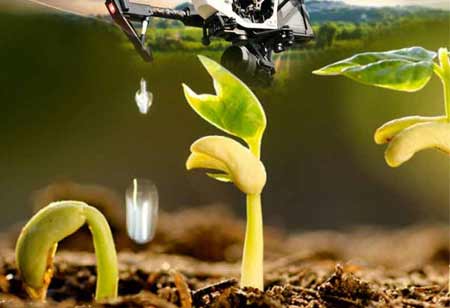Thank you for Subscribing to Agri Business Review Weekly Brief
The Future Of Agriculture Is Smart Farming
The Internet of Things, but with an enterprise angle. Take that as vertical industry applications, development ecosystems, product design, hardware, deployment, and more.

By
Agri Business Review | Monday, September 26, 2022
Stay ahead of the industry with exclusive feature stories on the top companies, expert insights and the latest news delivered straight to your inbox. Subscribe today.
As we increasingly demand from our farmers, harnessing IoT technology for smart farming appears to be the only conceivable way they’ll be able to succeed.
Fremont, CA: The Internet of Things, but with an enterprise angle. Take that as vertical industry applications, development ecosystems, product design, hardware, deployment, and more.
IoT is supporting food production. Well, food production is technical. The pressures are being placed on today’s farmers. They incorporate:
• Availability of water: A customer, a large seed company, is investing greatly in agriculture that requires less and less water to grow because farmers must rely on increasingly unpredictable weather and urban battle demand for underground aquifers.
• Land: Many farmers are pressured to sell their land as subdivisions and businesses move around them.
• Government/environmental regulations: The federal government (and frequently other foreign governments) are imposing more restrictions on producing food. This can impact pesticides, genetically modified organisms, land management, workforce, or animal welfare. Even customers are demanding their standards from farms these days.
• Managing pests: Controlling insects and disease have plagued (pun intended) humans from the first days of farming. It takes time and money to guarantee that whatever measures are utilized to drive away or eradicate pests are safe for the crops and those who use them.
• Maintaining a profit: Similar to every business, farmers struggle with maintaining a profit in a market where prices are almost often stable or falling, and expenses continue to increase.
• Increasing yields: Upgrading the yield (amount of output per acre) is important because it offsets increasing costs and helps accommodate a growing population on less and less land.
While the average farmer may not be retained in high regard by a layperson, these individuals often run multimillion-dollar businesses. They can handle all the complexities and challenges that come with it.
Increasingly, the agriculture industry and individual farmers must rely on technology to conquer business challenges. IoT is a key element of these plans — millions of farmers across America are implementing connected devices.
Looking at the list of disputes listed above, IoT and smart farming can support farmers in all these areas:
• The handiness of water: Deployed field sensors can create data points that monitor things such as rainfall in specific areas or water requirements for crops to help drive irrigation strategies and reduce water consumption.
• Land availability: While IoT cannot control land prices, it can help make farms better neighbors. IoT technologies can look for disease outbreaks in livestock, enabling sickened animals to be isolated from the herd and treated.
• Government/environmental regulations: Increased regulation implies farmers must now provide data points from farm to fork and every step. By doing so, farmers guarantee that various government import needs are followed by local producers, making products accessible to a wider market overall.
• Managing pests: Sensors can monitor & scan the environment for infestations to identify pest hotspots, enabling more targeted applications of insecticides and other pest controls. This not just controls costs but also reduces potential negative environmental impacts.
• Maintaining a profit: Many people have read about Silicon Valley’s self-driving vehicle obsession. Companies such as Google, Uber, and Tesla are all working on this technology. Still, people may not realize that self-driving technology and IoT sensors are already being applied to tractors and other farm implements. Reducing the need for labor creates direct cost savings for farmers, enabling them to spend resources on other aspects of their business.
• Increasing yields: As stated before, having access to real-time data that aids crop and animal monitoring allows farmers to quickly identify and resolve problems, enhancing their overall yield. Data points that can be broken down to a specific location help immensely. Even tractors are assisting by monitoring real-time yields as they plow, fertilize and harvest.
As we increasingly demand from our farmers, utilizing IoT technology for smart farming appears to be the only conceivable way they’ll be able to succeed. With a world population proposed by the United Nations to be 9.8 billion in 2050 and 11.2 billion in 2100, IoT in agriculture is an imperative need.





